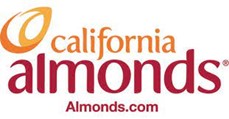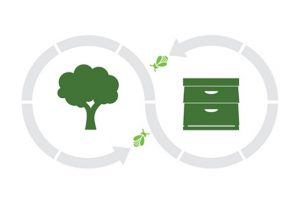
Nature’s Perfect Duo
When almonds trees bloom, bees get their first food source from our orchards’ nutritious pollen. While bees are only with us for two months of the year as they pollinate the crop, we work to support their health for all twelve.
We’ve been leading bee health research efforts since 1995, so farmers can confidently provide safe habitats that allow them to leave stronger to pollinate other crops. In collaboration with partners beyond our industry, our Honey Bee Best Management Practices serve as a guide to all of agriculture for protecting pollinator health on-farm.
What’s more, we’re working with others to solve the complex set of challenges bees’ face because we know by partnering together, we can find real solutions. Because without bees, there would be no almonds.

Almond Trees need cross-pollination, and honey bees help move pollen from tree to tree, setting the crop.
Bee Hives consistently leave almond orchards stronger than when they came in because with natural occurring compounds like amygdalin, almond pollen is very nutritious to bees and is their first natural food source of the year.1, 2
- 33 percent of our global food production relies on pollinators.
- 90 U.S. crops pollinated by commercial honey bees each year.
- 125+ Almond Board-funded honey bee health research projects to date.
- 1995: The year we created the Honey Bee Health Taskforce to specifically to specifically fund research to improve bee health.






